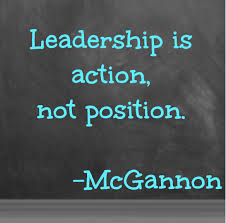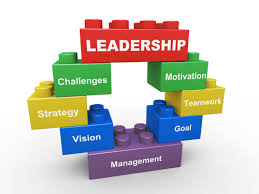“Great organizations demand a high level of commitment by the people involved.”
– Bill Gates
Vision (eyesight) is one of our five senses, eyesight is how ‘si ghted’ people get input from the world around us. Eyesight is something that I do NOT take for granted, especially due to personal circumstances over the past six months. In this blog post I am going to draw parallels to my personal experiences with my vision and the concept of Vision in terms of organizational growth and change.
ghted’ people get input from the world around us. Eyesight is something that I do NOT take for granted, especially due to personal circumstances over the past six months. In this blog post I am going to draw parallels to my personal experiences with my vision and the concept of Vision in terms of organizational growth and change.
For 35 years I wore eyeglasses to correct my vision – correct as in meaning to improve sight. Sight in terms of what I could see with focus, distance, depth, perception, etc. I could still “see” without glasses, but my “vision” was distorted. With a distorted vision, I was not able to fully “see” or take in the world. The change I needed to make in my life was the change to wear glasses to “correct” my vision.
Often our vision needs to be corrected so that change and new methods can be embraced for improvement
Last year I started to lose my clear vision in my left eye (even with the change I had made 35 years prior) – even with glasses, the vision in my left eye was deteriorating. Again, I had to make choices: 1. let my vision deteriorate and accept a new limited reality; or 2. embrace change again to “correct” my sight.
During the period last year when my vision was departing from my left eye I discovered I was developing cataracts. A cataract “grows” on the lens of the eye and impedes sight. During this experience the first change method I used to correct my vision, eyeglasses, was no longer  sufficient.
sufficient.
For 35 years one method of correction worked and I was able to “see”. All of a sudden, out of nowhere I had two options: 1. live with limited vision or 2. have cataract surgery. Cataract surgery is not Lasik surgery; lasik works on the cornea (see the image at the left). Cataract surgery requires the removal and replacement of the lens in the eye. I also discovered during this process of stress, uneasiness, chaos, dissonance, “cheese moving” so to speak – that I needed to replace the lens in both eyes not just in my left eye. So … for a guy who is queasy with “health” stuff … I had to make a choice to confront my fears, confront risk and uncertainty and depart with the habits I had developed over a 35 year glasses wearing period.
So, after two surgeries – successful thankfully – my vision had not only been improved, but I did not need glasses anymore. My brilliant opthamologist inserted a distance lens in my right eye (still 20/20) and a reading/mid range  lens in my left eye (20/20 reading and mid range). Wow – change was awesome! Wow – surgery and recovery was not so bad after all.
lens in my left eye (20/20 reading and mid range). Wow – change was awesome! Wow – surgery and recovery was not so bad after all.
A change model I use in graphic form is the Virginia Satir change model (depicted in the image to the left). Applying this model to my personal health changes, the discovery of cataracts equate to the foreign element (by red triangle) introduced in my life.
Initially there was resistance (step 2). I was scared, angry, resentful, concerned, confused, and uncomfortable. The chaos, step 3, was the surgery, recovery and my experiences in those settings.
The Transforming Idea (red triangle at the bottom of the image) was the fact that after two surgeries I had better eyesight than I had ever had. NO more glasses! NO reading glasses! The ability to wear sunglasses! No limited night vision. This all led to “integration”, step 4, and a new status quo. The change was fantastic and the new status quo was far better than the old one!
Change is a process, change is part of life, change is inevitable. Few of us seek change but in the end, many changes are far better than “that’s the way we have always done it” mentality.

In the Deerfield Public Schools, District 109, we are engaged in a Strategic Planning process. Strategic means change, improvement, new, different. Strategic Planning means that the Satir Model of Change will now be applied to our organization.
In strategic planning organizations (in our case as a public school district) the Board of Education sets the mission, vision, values, and goals, and the superintendent and leadership team works to develop objectives for each of the goals. Each objective aligns to a goal.
Each goal is also aligned with the values or guiding principles. Those principles are aligned to the portrait of a graduate (beginning with the end in mind).
The portrait of a graduate is aligned to the vision and mission. I’m deliberately stating all of this to set the stage for how vision and change are coming to the Deerfield Public Schools! Our past 3.5 years have been filled with completing plans made by previous boards and leaders – we are proud of these plan completions and I have penned a number of blog posts about the impact of these changes. Now, the stage is set for the next few years to be guided and directed by and grounded in the new Strategic Plan.
In terms of strategic planning, setting the stage for what we hope to become, or setting the vision, is a complex process of input, review, soul searching, input searching, and hope.
Vision on in an organization refers to an aspiration — or hope about the future.The vision describes what the future will become. It describes how the organization will look in its future. The visions that get actualized are those that are based upon shared values and ideals.
in its future. The visions that get actualized are those that are based upon shared values and ideals.
A shared vision is powerful because members of the organization synthesize their hopes and aspirations in support of the common cause – or SHARED VISION. As a leader my aim is to inspire a shared vision. My aim is to generate ideas and synthesize multiple points of input into coherent action plans. My aim is to plan for change that is powerful, meaningful, and that becomes all hands on deck change.
Kouzes & Posner, authors of the Leadership Challenge, have found through extensive research across industry, that the 5 Exemplary Characteristics of leaders are:

Model the Way/Inspire a Shared Vision/Challenge The Process/Enable Others to Act/Encourage the Heart
Over the past few years our leadership team has spent significant time engaged in book review, 360 degree assessments based upon the Leadership Challenge LPI 360, and as a team we have strived to embody all five of these characteristics in all that we do as we lead and serve. The leadership framework upon which Nick Polyak and I frame in our upcoming book, The Unlearning Leader, is based on the 5 exemplary practices of a leader! These practices resonate with me and my leadership team.
By Inspiring a Shared Vision, when the “foreign” element is added into the mix, and the old status quo is challenged (challenge the process is another of the exemplary practices of a leader) the resistance is lessened and the pain is diminished when large numbers of stakeholders are engaged in the planning, vision creation, and planning!
In the Deerfield Public Schools we received more than 1,700 people’s input into our Strategic Plan – our district has 3000 students from 1,850 families, so the 1,700 voices helping guide our work give me great comfort that all voices are on the table as we prepare to make our system better – and as we prepare to make changes in our system.
Just like my personal experiences with change have had painful and uncomfortable moments, and just as I did not control elements of what happened to me, our organization is on the path toward meaningful change!
For another post at another time, I’ll explain how my perfect vision and my revised status quo was once again challenged as a torn retina became yet another foreign element in my life creating chaos, and change. As I march towards my new status quo I’m proud that my medical team, family, friends, co-workers, and employer have all helped inspire a shared vision in me — quite literally and figuratively!
To the future ….
As always comments are welcomed and encouraged!









